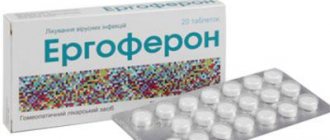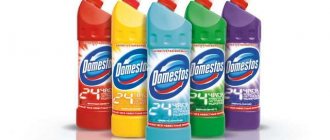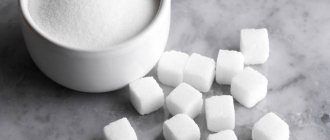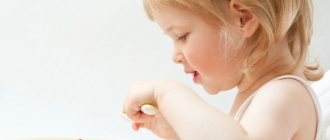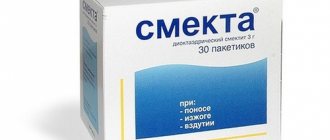Concept
Escherichia coli is a harmful microorganism with an increased ability to survive. It persists for a long time in water, feces and soil. Belongs to the genus Escherichia, the family of Enterobacteriaceae. The bacillus is located in the lower intestine and is capable of multiplying there. There are two types - pathogenic and opportunistic.
Safe strains of E. coli are beneficial for humans. They stimulate the synthesis of vitamin K and control the proliferation of pathogenic intestinal microflora. Many of them are used to produce medicines that normalize the digestive process.
Pathogenic E. coli multiplies quickly in food and water. Once in the body, microorganisms disrupt the functioning of the gastrointestinal tract and provoke the development of intoxication.
You will like the article: “ What to do if you are poisoned by mold .”
Diagnostics
The infection is diagnosed based on bacteriological examination. Often, if there is a rod in the research material, which is the main part of the normal intestinal microflora, it is very difficult to isolate a pure culture of the pathogenic bacterium. If an inflammatory process occurs in the body, urgent treatment is recommended. To obtain the analysis result use:
- feces and vomit;
- blood;
- urine;
- pus;
- smears or scrapings taken from the mucous membranes of the genital organs.
Mechanism of occurrence (pathways)
How does E. coli enter the human body? There are two methods of transmission of infection. Methods:
- Oral. The bacillus penetrates the oral cavity as a result of drinking contaminated water and food, as well as due to non-compliance with hygiene rules.
- Contact and household. A similar path is possible during epidemics. Infection of a child from the mother during childbirth is considered dangerous.
Not all strains provoke the development of poisoning. Intoxication occurs as a result of bacteria entering the body from outside.
Causes and symptoms of E. coli
Overdose occurs for various reasons. However, the main factors that provoke the occurrence of poisoning are identified. Factors:
- rare hand washing;
- poorly washed fruits and vegetables;
- drinking raw milk;
- poor-quality heat treatment of raw meat;
- drinking water contaminated with bacteria;
- improper storage of prepared meals and products.
Bacteria can get onto food from other objects. This is cross-contamination, for example, using raw meat boards to cut vegetables. Thus, food poisoning caused by E. coli occurs for various reasons.
Symptoms of E. coli
How does stick intoxication manifest? The incubation period lasts several days; in rare cases, signs begin to appear after a week. Symptoms are similar to other food poisoning. Signs:
- intense diarrhea, which is replaced by prolonged constipation;
- painful sensations in the abdomen due to increased intestinal motility;
- increased formation of gases;
- nausea, vomiting that does not bring relief to the patient;
- feverish state with temperature rising to 40 degrees;
- general weakness, lethargy;
- lack of appetite.
In mild cases of poisoning, symptoms are minimal. Vomiting and diarrhea help the body rid itself of toxic substances and does not require medical attention.
Classification
Escherichia coli can be opportunistic (which includes hemolyzing Escherichia coli) and pathogenic. Scientists were able to isolate more than a hundred pathogenic strains of this bacterium, which were subsequently divided into four main classes, namely:
- enteroinvasive;
- enterotoxigenic;
- enteropathogenic;
- enterohemorrhagic.
These microorganisms can cause the development of escherichiosis, an infectious disease that, according to statistics, is most often found in children and women (the infection is transmitted by the fecal-oral route, mainly through food or water).
| Form | Features of Escherichia coli |
| Enteropathogenic escherichiosis | Acute intestinal infection caused by an enteropathogenic bacillus. The disease often affects newborns, babies from birth to one year old. Frequent clinical manifestations:
The baby begins to spit up frequently and refuses to eat. The child's sleep is disturbed and he becomes restless. The disease is protracted and not intense. |
| Enterotoxigenic | This type of E. coli damage resembles the picture of food poisoning. Distinctive characteristics:
The disease affects adults and children of all ages. Often found among travelers. |
| Enteroinvasive | Enteroinvasive Escherichia coli causes acute foodborne illnesses in children and adults, the course of which is similar to dysentery. |
| Enterohemorrhagic | Enterohemorrhagic (hemolytic, hemolyzing) Escherichia coli causes hemorrhagic colitis in children and adults or hemolytic-uremic syndrome (HUS). Both diseases require treatment. |
Infection of other organs and systems of the body
Infection of other organs with E. coli occurs due to non-compliance with hygiene rules. With intense diarrhea, it is possible for bacteria to get on the underwear, from where they penetrate the genitourinary organs.
The microorganism settles in the urethra and bladder, begins to multiply and disrupts the microflora. Swelling of the mucous membranes of these organs gradually develops. The patient experiences pain during urination, and blood may appear.
E. coli can penetrate the protective barrier of the unborn child and infect him in the womb.
Through damaged mucous membranes, harmful microorganisms enter the bloodstream and lead to the development of sepsis, spreading through the bloodstream to all internal organs. Such diseases are quite serious and require medical care in a hospital setting.
Consequences
Toxins produced by pathogens are especially dangerous for children, pregnant women and the elderly. Some diseases, such as staph infections, can cause blood poisoning (sepsis). This disease will manifest itself as ulcers on the skin, high fever, interruptions in pulse and breathing. Against the background of sepsis, peritonitis (also known as “acute abdomen”, inflammation of the peritoneum) or pneumonia may develop, and in complex cases, septic shock, circulatory disorders and death.
With chronic intestinal infections, the following are possible:
- severe pain;
- bloody diarrhea;
- general intoxication;
- peritonitis.
Peristalsis disturbances often begin, against which intestinal autointoxication develops. Its essence is that the intestinal microflora is activated, pathological changes are observed, which has a harmful effect on the system. Violation of peristalsis leads to constipation, toxins accumulate in the intestines, rot, and intoxication with putrefactive poisons begins. Intestinal autointoxication can be fatal due to intestinal volvulus or intestinal obstruction.
Also, as a result of severe intestinal diseases, pulmonary edema, acute renal failure, impaired myocardial function, and infectious-toxic shock are possible.
Escherichia coli infection in children
In children, poisoning caused by E. coli is much more complicated than in an adult. Children present with severe vomiting, diarrhea, and high fever.
Appetite disappears, lethargy, weakness, apathy, and increased irritability are observed. Often, children infected with the bacillus experience jaundice, mental disorders, and sleep problems. With proper treatment, such symptoms disappear quickly.
It is not recommended to independently treat such poisoning in children. The development of serious consequences cannot be ruled out.
Treatment methods for poisoning
How to treat intoxication caused by E. coli? If signs of poisoning appear, the patient is given first aid. It includes actions performed in case of food poisoning. Actions:
- perform gastric lavage;
- after the procedure, the victim takes sorbents - Polysorb, Polyphepan, Enterosgel;
- Give plenty of fluids to drink to prevent dehydration.
After first aid is provided, the patient is sent to a medical facility. The hospital conducts a thorough diagnosis of the E. coli that caused the poisoning and prescribes the necessary tests. Once an accurate diagnosis has been established, appropriate treatment is prescribed. Therapy includes various medications aimed at destroying bacteria and restoring the functioning of internal organs.
Medicines for E. coli:
- Antibacterial medications. Treatment with antibiotics is the most important step. After determining the type of E. coli, a suitable drug is selected. The most commonly used are Cephalexin, Levofloxacin, Cephelin. The duration of treatment reaches ten days depending on the degree of poisoning. Self-use of such medications is unacceptable.
- Bacteriophages. Medicines in this group destroy E. coli, but are less harmful than antibacterial agents. However, in some cases, they help less than antibiotics. Similar drugs include Sextaphage and Intesti - a bacteriophage.
- Analgesics. When poisoned, patients often experience severe pain in the abdomen. In such a case, the use of painkillers is allowed. This could be No-shpa, Nurofen.
- Probiotics. After treatment with antibacterial drugs, intestinal microflora is often disrupted. To restore it, it is recommended to use probiotics. It is possible to use Linex, Bifidumbacterin, Hilak Forte.
- Rehydration aids. In case of intense vomiting and diarrhea, the patient is recommended to take solutions that help restore the water-salt balance. These can be Regidron, Oralit, Gidrovit.
How to treat?
One of the main features of this strain of bacteria is the rapid acquisition of resistance to antibacterial agents. That is why treatment must be carried out under medical supervision and in no case should the drug be discontinued until negative culture results are obtained.
What is used in treatment:
- Tablets and injections of antibacterial agents. The use of a group of fluoroquinolones (Ofloxacin, Norfloxacin) showed good effectiveness. The patient's serious condition requires the use of antibacterial agents from the group of cephalosporins (Cefotaxime) and fluoroquinolones together with aminoglycosides.
- Treatment with bacteriophages was first developed 80 years ago by Soviet specialists. Bacteriophages are the most studied type of viruses, specifically designed to invade and destroy microorganisms.
- "Amoxiclav" refers to antibacterial agents often used in childhood and pregnancy.
- "Sumamed" is also used in the complex treatment of bacterial infection.
In addition to antibacterial therapy, it is imperative to dehydrate the patient, as well as use general restoratives. After antibiotics, it is necessary to undergo a course of restoring the normal microflora of the stomach with the help of prebiotic drugs.
Diet for intestinal infection
During the recovery period, important attention is paid to nutrition.
In most cases, a diet is recommended in which great attention is paid to protein foods, and the amount of fats and carbohydrates is reduced. This diet allows for the consumption of increased amounts of water. Food should be in crushed form. This will prevent damage to the intestines and speed up the absorption of nutrients.
Proper nutrition helps normalize the condition of the mucous membrane of the digestive system and reduces the formation of gases.
If E. coli has a negative effect on the genitourinary system, then it is recommended to completely remove salt from the diet. The permissible amount of water is no more than one liter. Reduce the amount of protein food, it contributes to the deterioration of the patient’s condition. The diet is determined by the doctor depending on the condition of the victim.
Analyzes
Special cultures help to identify the bacterial nature of the disease, as well as a separate strain of bacteria. In this test, a laboratory sample (smear, stool, or urine) is placed in a culture medium to encourage active growth and reproduction.
After obtaining reliable results about the type and volume of bacteria present, a drug treatment strategy is selected.
It should be taken into account that different means are used for individual strains of bacteria. In case of unreliable results or the patient’s critical condition, broad-spectrum antibiotics that are effective against gram-negative microorganisms are used.
Prevention
It is possible to avoid intoxication with E. coli if you follow the rules of prevention. Proper cooking will help destroy dangerous bacteria.
Measures:
- Carry out thorough heat treatment of meat and milk.
- Wash vegetables and fruits well.
- Observe hygiene rules.
- In a medical facility, use disposable clothing,
- Carry out regular cleaning of residential premises.
E. coli intoxication poses a danger to human health. If unpleasant signs appear, it is recommended to contact a medical professional. Compliance with preventive rules will help avoid intoxication.
Video: Intestinal infection - what is it?
Read further:
How to use rehydron for dogs for vomiting and diarrhea - dosage
What powder to take in case of poisoning for children and adults ▶
Nurofen overdose - consequences and symptoms
What is the best day to get pregnant?
Disinfectants and antibacterial agents: how do they work and how to use them?
Article rating:
( 1 ratings, average: 5.00 out of 5)
Share with friends:
You may also be interested in:
Can children and adults eat crackers if they are poisoned?
Tuberculosis intoxication - children, adolescents and adults



